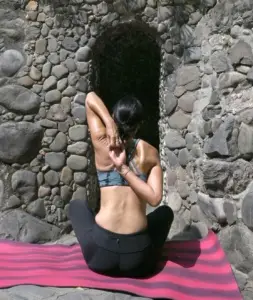
Vertigo is characterized by a sensation of dizziness or spinning, often caused by inner ear problems or issues with the vestibular system. Mindful-based practices can be beneficial for managing vertigo by promoting balance, improving circulation, and reducing stress, which may help alleviate symptoms and improve overall well-being.
Benefits of Vertigo Therapy:
Considerations before Starting:
Mindful Poses and Practices for Vertigo:
Breathing Exercises for Vertigo:
Mindful Practice for Vertigo:
Summary with Tips:
Mindful-based practices for vertigo focuses on promoting balance, stability, and relaxation, offering gentle yet effective practices to manage symptoms and enhance overall well-being. By incorporating these mindful poses, breathing exercises, and meditation techniques into your routine, you can support your journey towards finding balance and stability amidst vertigo challenges.

GoInwards is an IRS 501(c)(3) Non-Governmental Organization (NGO), chartered to advance wellness through integrative health related awareness, prevention, intervention, and resilience-based educational programs.
FEIN 90-0609802